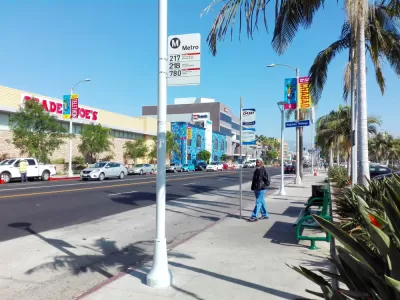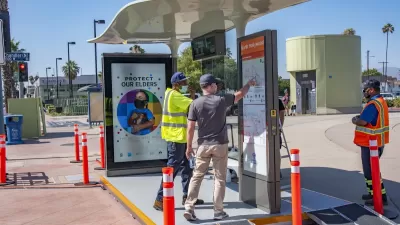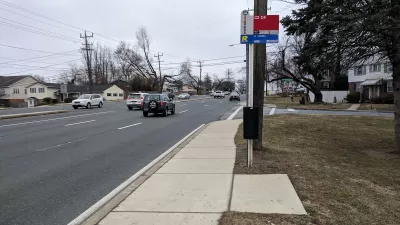As heat waves intensify, bus riders in Los Angeles are forced to wait at bus stops that offer little shade or seating, putting vulnerable residents at risk of heat stroke and other health impacts.

According to an article by Rachel Uranga in the Los Angeles Times, “Of the 12,200 bus stops served by the Los Angeles County Metropolitan Transportation Authority, only a quarter have some kind of shade or rain shelter, and only half have a seat for those waiting.”
As heat waves become increasingly deadly, Uranga asks, when will L.A. bus riders finally have adequate facilities to protect them while they wait for the city’s (often late) buses?
“While the average trip on a Metro bus is less than five miles, about half the time of that journey is spent looking down the road for signs of a bus.” As Uranga points out, “The searing weather is yet another setback for largely low-income bus riders who often face long, difficult commutes.” The city is working on a contract to add more shelters to bus stops in its jurisdiction, but the project could take years.
While Los Angeles may be known for historically mild weather, those days are essentially over. Juan Matute, deputy director of the UCLA Institute of Transportation Studies, says “Climate change is changing the baseline of all these past decisions.” To protect vulnerable residents, “Transit advocates say the agencies need to look to desert cities like Phoenix, where bus stop canopies equipped with misters and fans to cool riders have been installed.”
FULL STORY: Heat waves are getting worse. When will L.A. get around to offering bus riders more shade?

Alabama: Trump Terminates Settlements for Black Communities Harmed By Raw Sewage
Trump deemed the landmark civil rights agreement “illegal DEI and environmental justice policy.”

Planetizen Federal Action Tracker
A weekly monitor of how Trump’s orders and actions are impacting planners and planning in America.

The 120 Year Old Tiny Home Villages That Sheltered San Francisco’s Earthquake Refugees
More than a century ago, San Francisco mobilized to house thousands of residents displaced by the 1906 earthquake. Could their strategy offer a model for the present?

In Both Crashes and Crime, Public Transportation is Far Safer than Driving
Contrary to popular assumptions, public transportation has far lower crash and crime rates than automobile travel. For safer communities, improve and encourage transit travel.

Report: Zoning Reforms Should Complement Nashville’s Ambitious Transit Plan
Without reform, restrictive zoning codes will limit the impact of the city’s planned transit expansion and could exclude some of the residents who depend on transit the most.

Judge Orders Release of Frozen IRA, IIJA Funding
The decision is a victory for environmental groups who charged that freezing funds for critical infrastructure and disaster response programs caused “real and irreparable harm” to communities.
Urban Design for Planners 1: Software Tools
This six-course series explores essential urban design concepts using open source software and equips planners with the tools they need to participate fully in the urban design process.
Planning for Universal Design
Learn the tools for implementing Universal Design in planning regulations.
Clanton & Associates, Inc.
Jessamine County Fiscal Court
Institute for Housing and Urban Development Studies (IHS)
City of Grandview
Harvard GSD Executive Education
Toledo-Lucas County Plan Commissions
Salt Lake City
NYU Wagner Graduate School of Public Service





























